History of Mykolaiv
Before the foundation of Mykolaiv
The first known settlements on the banks of Pivdennyi (Southern) Buh and Inhul rivers existed about 20 thousand years ago. About 3,200-3,300 years ago, on the site of today’s Mykolaiv, for several hundred years there was a fortified settlement of the Cimmerians, the only known port in the north of the Black Sea during the Trojan War.
Its residents were engaged in agriculture, grazing cattle. Craftsmen also lived here, including casters, who made not only jewelry, but also weapons. This is the oldest town on the territory of Ukraine mentioned in written sources.
About 1,000 years ago there was a Christian monastery on the territory of Mykolaiv. It was destroyed during the Mongol invasion in 1233-1236. In 1399, in the southern part of the present-day city of Mykolaiv, Vytautas, the Grand Duke of Lithuania, built a castle and customs to control trade with the Crimean Tatars. Later this settlement became known as Vitovka.
From the end of the 15th century, the history of this region was closely connected with the Zaporizhzhya Cossacks, who became the basis for the formation of the Ukrainian ethnic group in these lands. Cossack settlements were founded along the banks of the rivers, crossings across the rivers were arranged.
In the first half of the 18th century, most of the region still remained sparsely populated. The impetus for its further development was the fact that the Russian Empire, as a result of the Russian-Turkish wars, gained access to the Black Sea. According to the Kuchuk-Kainarji peace treaty of 1774, Vitovka, together with the lands between the Dnieper and the Southern Buh, was ceded to Russia. With the opportunity for unhindered navigation in the Azov and Black Seas, the Russian Empire began to create a fleet. A hospital was opened in Vitovka, where the sick were treated with healing water from springs and local herbs.
More historical facts…
Foundation of Mykolaiv (Nikolaev)
The birth of Mykolaiv is associated with the decision taken by Prince Grigory Potemkin, a famous Russian nobleman, military leader and favorite of Catherine the Great, to build a shipyard on the Inhul River called Nikolaev in 1789. It was named in honor of St. Nicholas, the patron saint of sailors. There is also a version that it was named in honor of the victory of the Russian troops during the capture of the Ottoman fortress of Ochakov in 1788, which coincided with the Day of St. Nicholas.
In 1789, Potemkin renamed Vitovka to Bogoyavlensk (literally, “the appearance of God”), because of the local healing water sources, which were considered a “gift of God.” Nikolaev received the status of a town in 1790, when the first ship, the 44-gun frigate “St. Nicholas”, was launched from its shipyard. Nikolaev was built according to a plan designed by the Russian architect Ivan Starov - with straight streets and regular town blocks. For the next almost 100 years, the headquarters of the Black Sea Fleet of the Russian Empire was located here.
In 1792, in Nikolaev, there were 1 church, 100 barracks, 158 stone houses, 209 huts, 149 shops, 1,566 residents and 1,734 temporary workers. In 1796, the Black Sea Admiralty Administration was transferred from Kherson to Nikolaev. In 1798, Nikolaev was visited by the traveler Belsazar de la Motte Hacquet during his trip to the Northern Black Sea region. He left such memories of the town: “I went straight to Nikolaev, the most beautiful town among the steppes of all Tavria: it has a lot of large streets with detached houses with columns, beautiful squares and a large building of the Admiralty along with a shipyard.”
Nikolaev in the first half of the 19th century
In 1802, Nikolaev became the center of a separate Nikolaev Governorate, after the division of the Novorossiya (New Russia) Governorate into Yekaterinoslav, Nikolaev and Tauride governorates. However, the Nikolaev Governorate lasted less than a year. By decree of Emperor Alexander I, it became known as the Kherson Governorate. In 1803, the first coat of arms of Nikolaev was approved.
In 1821, the first observatory in the south of the Russian Empire was built in Nikolaev. In the early 1830s, optical telegraph lines were laid from Nikolaev to Sevastopol, Kherson and Izmail. In 1835, the first official names were given to the streets of Nikolaev.
During the Crimean War (1853-1856), Nikolaev became the main rear base of the Russian Black Sea Fleet. In addition, about 4,000 people were sent from Nikolaev to the Crimea and took part in the defense of Sevastopol. Barracks, schools and private houses were used as hospitals for the wounded evacuated from Sevastopol. In 1855, when the threat of the capture of Nikolaev arose, a state of siege was declared in the town. To prevent a possible invasion of Nikolaev by enemy ships and troops, fortifications with 160 guns were erected on the outskirts of the town by soldiers and civilians.
The Paris Peace Treaty, signed after the Crimean War, forbade all Black Sea states to have navies, arsenals and fortresses on the Black Sea coast. Initially, George William Frederick Villiers, 4th Earl of Clarendon (the British Secretary of State for Foreign Affairs) tried to force the Russian Empire to also destroy the naval shipyards in Nikolaev, but without success. From a formal point of view, Nikolaev did not fit the concept of a port lying on the Black Sea, since it was located on the banks of the Southern Buh River, at some distance from the sea coast.
Nikolaev in the second half of the 19th century
In 1862, a commercial port was opened, which served as an impetus for the transformation of Nikolaev into a significant economic and commercial center. In 1863, the population of the city was about 64,600 people. In 1873, a railroad connected Nikolaev with Kharkov. In 1881, on the corner of Sobornaya Square and Admiralskaya Street, the building of the Monte theater (named after the owner) was built. Today, it houses the Mykolaiv Academic Art Drama Theater.
In 1883, the second coat of arms of Nikolaev was approved. In 1889, a river yacht club was opened in the city. In 1891-1893, a huge grain storage silo was built, the third largest silo in the Russian Empire, which could store about 28,000 tons of grain.
At the end of the 19th century, a Belgian joint-stock company began the construction of shipbuilding, mechanical and foundry plants on the banks of the Buh Estuary. The enterprise was put into operation under the name “Anonymous Society of Shipbuilding, Mechanical and Foundry Plants in the Town of Nikolaev” in 1897. The abbreviated name was “Naval’”.
Almost simultaneously with “Naval’” plants, the “Society for Mechanical Production in Southern Russia” built the Black Sea Mechanical and Boiler Plant at the neighboring site. In 1908, this plant merged into “Naval’” plants, which later became known as the Black Sea Shipbuilding Plant.
At the end of the 19th century, the Nikolaev port ranked third after St. Petersburg and Odessa in terms of foreign trade, and in terms of grain exports, the suppliers of which were the steppe regions, ranked first in the Russian Empire. It also became an important industrial center.
In 1897 and early 1898, the South Russian Workers’ Union operated in Nikolaev - an illegal social democratic organization founded by Roman Korotkov and Ivan Mukhin. Soon the leading role in it began to be played by 17-year-old Lev Bronstein, later known under the pseudonym “Trotsky”. The organization consisted of more than 250 factory workers. At the end of January 1898, the members of the Union were arrested and exiled to Siberia.
Mykolaiv in the 20th century
In 1907, an original water tower designed by engineer Vladimir Shukhov was built in Nikolaev. In 1911, the population of the city was about 105,000 people. In 1914, the Nikolaev Art Museum named after V.V. Vereshchagin was opened.
From 1918 to 1920, during the Civil War on the territory of the former Russian Empire, the power in Nikolaev changed several times. On February 1, 1920, Soviet power finally was established in the city and it became part of Soviet Ukraine. In Ukrainian, the name of the city was spelled Mykolaiv.
In 1920, all local shipyards were merged into one enterprise. In 1931, it was named the Plant of 61 Communards (today’s Mykolaiv Shipyard) - in memory of 61 shipyard workers shot on the night of November 20, 1919. After Lenin’s death, local authorities proposed to rename Mykolaiv to Vernoleninsk (literally “Faithful to Lenin”). However, the proposal was not approved.
In 1931, the first Soviet project of reconstruction of Mykolaiv was developed. In order not to build bridges, the eastern and southeastern directions were chosen as the main vectors for the development of the city. The railway junction was moved to the eastern part of Mykolaiv. In 1937, it received the status of the administrative center of Mykolaiv Oblast. In 1939, the population of Mykolaiv was 168,676 people.
In the years before the Second World War, Mykolaiv turned into a large industrial center with 40 enterprises of republican and union significance, not counting hundreds of local enterprises. On August 16, 1941, during the Second World War, the German army entered Mykolaiv. During the occupation, an underground sabotage group “Mykolaiv Center” operated in the city.
On the night of March 26, 1944, a detachment of 68 people, led by Senior Lieutenant Konstantin Olshansky, landed behind German lines in the commercial port of Mykolaiv. Having occupied several port buildings and adapted them for defense, the detachment fought for two days until the main forces of the Red Army approached. All participants in this military operation were awarded the title of “Hero of the Soviet Union”; most of them posthumously. Of the entire landing party, 11 people survived; everyone was injured. On March 28, 1944, Mykolaiv was liberated from the German troops.
In the post-war period, Mykolaiv became one of the largest shipbuilding centers in the USSR. In 1958, the Southern Turbine Plant was put into operation - one of the world’s largest manufacturers of gas turbine equipment. In 1980, the largest in Ukraine and one of the largest non-ferrous metallurgy enterprises in Europe, the Mykolaiv alumina refinery, was opened. From 1959 to 1989, the population of Mykolaiv increased from 226,207 to 523,812 people.
In 1987, on the yacht “Ikar”, designed and built by students and employees of the Mykolaiv Shipbuilding Institute, the team of 7 people for the first time in Ukraine carried out a round-the-world voyage.
On September 26, 1997, the current city coat of arms was approved, almost an exact copy of the coat of arms of 1883, with the exception of the absence of the coat of arms of the Kherson Governorate on it.
Architecture of Mykolaiv
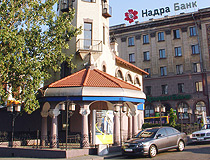
Sunny day in Mykolaiv
Author: V.Kulik
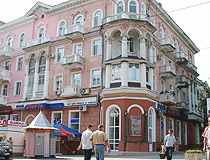
Picturesque old building in Mykolaiv
Author: O.Kuchin
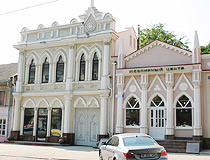
Beautiful architecture of Mykolaiv
Author: O.Kuchin
Mykolaiv - Features
Mykolaiv is located in the south of the steppe zone of Ukraine, on a peninsula washed by the waters of the Pivdennyi (Southern) Buh and Inhul rivers. The City Day of Mykolaiv is celebrated on the 2nd Saturday of September.
The climate of Mykolaiv is temperate continental, with moderate winters with little snow and dry hot summers with infrequent but strong thunderstorms. The average temperature in January is minus 2 degrees Celsius, in July - plus 23.8 degrees Celsius.
The coat of arms of Mykolaiv in general repeats the historical coat of arms of the city of 1883. It reflects the connection of this city with shipbuilding and the fleet, which is symbolized by the ship depicted on the coat of arms. The miter against the background of two crossed staves symbolizes that Mykolaiv is under the protection of the patron saint of the city - St. Nicholas the Wonderworker. Crossed staves mean stability, balance.
In the structure of the industry of Mykolaiv, the main place is occupied by mechanical engineering and metalworking, among which such industries as shipbuilding and power engineering stand out. In total, there are three shipyards: the Black Sea Shipyard, the Mykolaiv Shipyard and the Okean Shipyard. One of the largest enterprises in the city is the Mykolaiv Alumina Plant, which produces alumina (raw material for aluminum production).
Mykolaiv is also a major transport hub of Ukraine with several ports. The main exported goods are agricultural products, oils, coal, sulfur, scrap metal, lumber, etc.
Public transport is represented by mini-buses, trolleybuses, trams. The international airport of Mykolaiv offers regular flights to Kyiv and Istanbul (Turkey).
Main Attractions of Mykolaiv
Museum of Shipbuilding and the Fleet. The museum is located in a building, which is a monument of history and architecture of national importance built in the style of early Russian classicism at the end of the 18th century. In 1794-1900, it was the residence and office of the chief commanders of the Black Sea Fleet of the Russian Empire.
Opened in 1978, this is the only shipbuilding museum in Ukraine. Its unique exposition has several thousand exhibits and is dedicated to the development of shipbuilding in the Northern Black Sea region, starting from ancient times, the process of creating the Black Sea Fleet, the development of local shipbuilding enterprises and reflects the history of ships built in Mykolaiv. There are about 100 ship models in the museum. Admiralska Street, 4.
Mykolaiv Regional Museum of Local History. Opened in 1803, it became one of the first museums of antiquities in the Russian Empire. Since 2012, this museum has been housed in the Old Fleet Barracks built in the style of classicism for sailors of naval crews in 1850, an architectural monument of national importance.
In total, this museum has more than 160 thousand exhibits. The most valuable ones are the objects of archaeological excavations from Pontic Olbia and the Crimea, the weapons of the Zaporizhzhya Cossacks, artifacts on the history and development of Mykolaiv, the shipbuilding industry of the city, etc. Thematic exhibitions, festivals and historical reconstructions are often held here. Naberezhna Street, 29.
Mykolaiv Art Museum named after Vasily Vereshchagin. This museum was founded by members of the local society of fine arts in 1914. It was a monument to the most famous Russian war artist Vasily Vereshchagin. It is located in one of the best buildings in Mykolaiv, an architectural monument of the second half of the 19th century. The museum has a rich collection of about 10 thousand exhibits.
The central place in the exhibition is occupied by the works of Vasily Vereshchagin, created by him as a participant of military conflicts in the Ottoman Empire, Central Asia, India, and China. In addition, there are paintings by Aivazovsky, Bogolyubov, Serebryakova, Polenov, Dubovsky, and others. Also there is a collection of icons. A collection of European art and an exhibition of Kazarian’s microminiatures are exhibited separately. Velyka Morska Street, 47.
Mykolaiv Zoo - one of the largest and most famous zoos in Ukraine. More than 400 species of animals from all over the world live here. This is the largest collection in Ukraine. Walking around this zoo can take a whole day. Mikolay Leontovich Square, 1.
Catholic Church of St. Joseph (1891-1896) - a majestic red brick building with colored stained-glass windows constructed in the “brick Gothic” style, the main Roman Catholic church in Mykolaiv. During Catholic holidays, organ music concerts are regularly held here. Dekabrystiv Street, 32.
Cathedral of Our Lady Mother Kasperovskaya (1872-1915) - one of the most beautiful churches in Mykolaiv. The church was consecrated in honor of one of the main shrines of the south of the Russian Empire - the Kasperovskaya Icon of the Mother of God. The walls of the cathedral are decorated with carved details in the style of old Russian architecture of the 16th-17th centuries. Sadova Street, 12.
St. Nicholas Cathedral Church (1813-1817) - a stone church built in the style of classicism, an architectural monument of national importance with preserved ornaments and wall paintings of the 19th century. Fal???vs’ka Street, 4.
Cathedral of the Nativity of the Virgin (1800) - the oldest preserved church of Mykolaiv. The height of this building in the style of classicism is 38 meters. The bell tower with a bell weighing more than 8 tons was built in 1876. Today, it is the main cathedral of the Mykolaiv diocese, the center of the spiritual life of the city and one of the most important architectural monuments. Lyahina Street, 10.
Shukhov Water Tower (1906-1907) - a historical and cultural monument of local importance standing on the top of Spassky Hill, one of the highest points in Mykolaiv. The height of the tower, designed by the famous Russian architect-engineer Vladimir Shukhov, is 32 meters. Its originality lies in the fact that it has a hyperboloid design. An illusion is created that the tower has a curved structure, while it is assembled from straight beams. Today, it is no longer used for its intended purpose. Ryumina Street, 9.
Flots’kyi (Fleet) Boulevard - one of the most important historical streets of Mykolaiv and the most beautiful place for walks. The grand opening of the boulevard, looking similar to Prymorskyi Boulevard in Odesa, took place in 1826. Initially, the boulevard was named Ingulsky, as it ran along the Ingul River. Due to the magnificent view of the river and the pier, it became known as Morskoy (Sea) Boulevard.
In 1976, major restoration work was carried out, after which the boulevard was renamed Flots’kyi to emphasize the connection of Mykolaiv with the Black Sea Fleet. A large number of monuments associated with the fleet and the shipbuilding industry are installed on this boulevard. Here you can enjoy beautiful views of the other bank of the Inhul River and bridges.
Mykolaiv Yacht Club (1904) - the oldest yacht club in Ukraine founded in 1887. It is located in the northwestern part of the city on the Southern Buh River. The building of the yacht club in the style of the Italian Renaissance was designed by the architect Leopold Rode. Today, the best yachting traditions have been preserved here. The club pays great attention to holding a large number of sailing regattas with yachts from all over the Black Sea coast. Sportyvna Street, 7.
Mykolaiv Astronomical Observatory (1821-1827) - an architectural monument of national importance and one of the oldest observatories in southeastern Europe, founded in 1821. It can be compared with the Royal Observatory in the UK and the US Naval Observatory. It supplied the Black Sea Fleet with nautical charts. Navigators were taught astronomical methods of orientation and adjusted navigation devices here.
In order to popularize astronomy, employees of several generations have preserved old astronomical instruments, books, paintings, maps, photographs, and astronomical clocks. In total, there are more than 150 exhibits. Observatorna Street, 1.


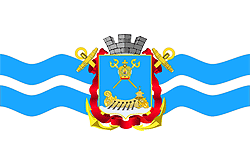
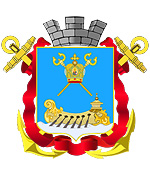



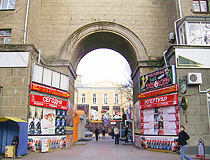
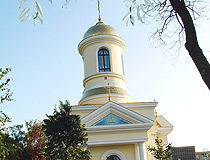
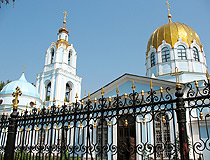
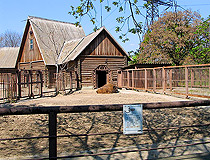
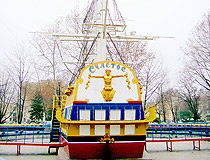
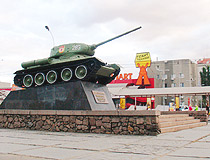
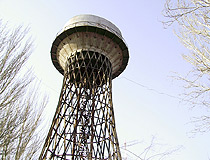
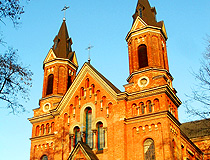
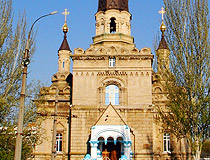
The comments of our visitors
All 15 comments